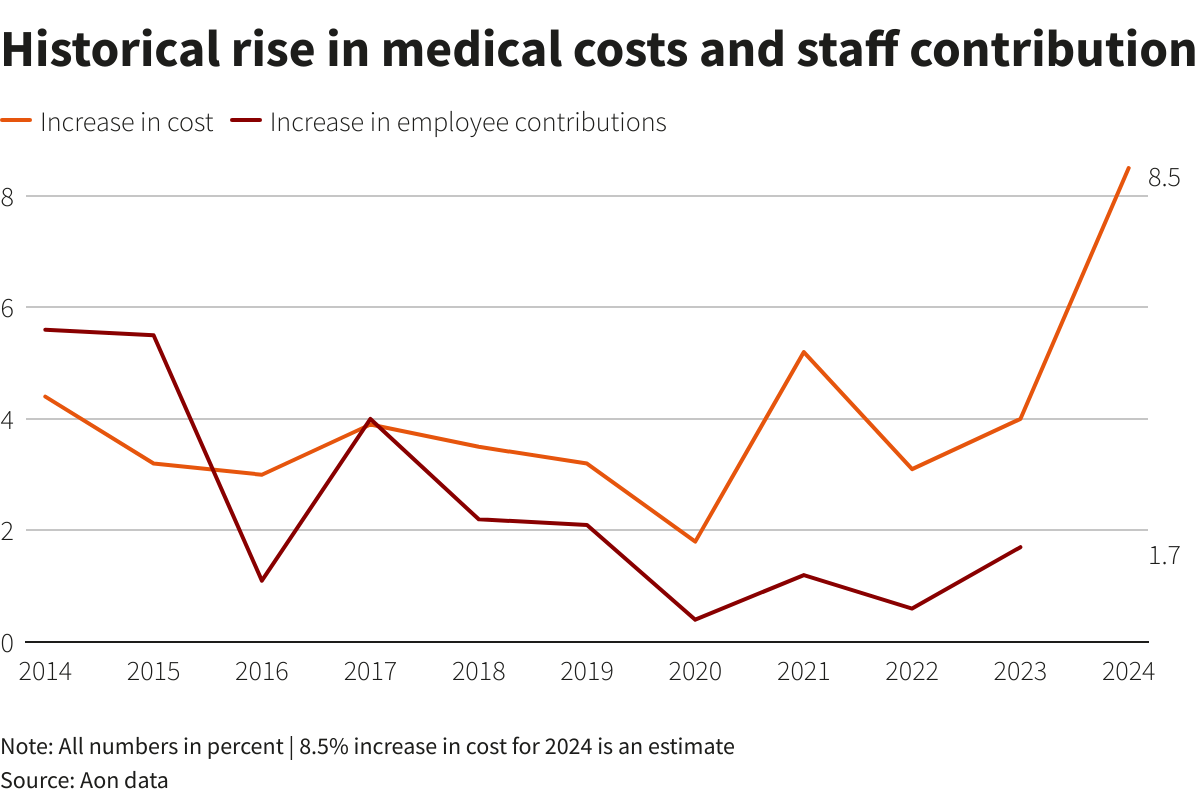Addressing The Urgent Mental Health Crisis Among Canadian Youth: Insights From Global Best Practices

Table of Contents
Early Intervention and Prevention Programs
Early identification and intervention are crucial in mitigating the impact of mental health issues among youth. Youth mental health prevention strategies must focus on identifying and addressing risk factors before they escalate into more severe problems.
Identifying Risk Factors
Several factors contribute to the development of mental health challenges in young people. These include:
- Bullying and cyberbullying: The pervasive nature of online harassment significantly impacts mental well-being.
- Academic pressure: Intense competition and high expectations can lead to stress, anxiety, and depression.
- Family conflict and instability: A lack of supportive family environments increases vulnerability.
- Social isolation and loneliness: Feeling disconnected from peers and lacking social support are significant risk factors.
- Trauma and adverse childhood experiences (ACEs): Exposure to traumatic events can have long-lasting mental health consequences.
Early intervention strategies necessitate:
- Importance of early screening and assessment tools: Regular mental health screenings in schools and healthcare settings are vital.
- Role of parents, educators, and peers in identifying warning signs: Training and awareness programs can empower those around young people to recognize signs of distress.
- Examples of successful early intervention programs: Programs like the "BounceBack" program in Canada and the "Headspace" program in Australia provide valuable models.
School-Based Mental Health Support
Integrating mental health services in schools is fundamental to supporting youth mental well-being. A comprehensive approach is vital for creating a supportive and inclusive learning environment.
Comprehensive School Mental Health Programs
Effective school-based programs include:
- Examples of successful school-based programs: Peer support programs, school-based counseling services, and mental health awareness campaigns are essential.
- Training for educators to identify and support students with mental health needs: Equipping teachers with the necessary skills to recognize and respond to students' mental health needs.
- Importance of creating a supportive and inclusive school environment: Fostering a culture of empathy, understanding, and acceptance within the school community. This includes anti-bullying initiatives and promoting positive mental health through extracurricular activities. This relates strongly to the keywords school mental health services and youth mental health in schools.
Improving Access to Mental Healthcare
Access to timely and appropriate mental healthcare remains a significant barrier for many Canadian youth.
Reducing Barriers to Access
Numerous obstacles hinder access to care, including:
- Cost: Mental healthcare can be expensive, particularly for families without adequate insurance coverage.
- Stigma: The social stigma surrounding mental illness discourages many young people from seeking help.
- Lack of awareness: Many young people and their families are unaware of available resources and support services.
- Geographic location: Access to mental health professionals can be limited in rural and remote areas.
- Wait times: Long wait times for appointments can delay essential treatment.
Addressing these barriers requires:
- Importance of increasing funding for youth mental health services: Significant investment is needed to expand services and reduce wait times.
- Expanding access to telehealth and virtual mental health services: Utilizing technology can improve access, particularly for those in remote areas. This is especially pertinent to the keywords youth mental health access and mental healthcare for youth Canada.
- Addressing stigma through public awareness campaigns: Reducing stigma through education and promoting open conversations about mental health is crucial.
- Improving coordination of care between different healthcare providers: Streamlining the referral process and ensuring seamless transitions between services is vital.
Global Best Practices and Lessons Learned
Learning from other countries' successful initiatives offers valuable insights for improving mental health services in Canada.
International Models of Success
Several countries have implemented successful strategies:
- Finland's youth mental health strategy: This strategy emphasizes early intervention, comprehensive school-based programs, and community-based support.
- Australia's Headspace program: Headspace provides a holistic approach to youth mental health, incorporating early intervention, treatment, and ongoing support.
Analyzing these successful strategies and their applicability to the Canadian context is important. This includes:
- Analysis of successful strategies and their applicability to the Canadian context: Adapting proven strategies to the unique needs and contexts within Canada is critical.
- Highlighting innovative approaches: Technology-based interventions and community-based support models offer promising avenues for improvement.
- Discussion of cultural sensitivity and inclusivity in mental health initiatives: Culturally appropriate and inclusive services are vital to ensuring equitable access to care for all young people. These points contribute strongly to the keyword global youth mental health.
Conclusion
Addressing the mental health crisis among Canadian youth requires a multi-pronged approach encompassing early intervention, comprehensive school-based support, improved access to mental healthcare, and the implementation of evidence-based strategies informed by global best practices. We must increase funding, reduce stigma, expand access to care, and create supportive environments in schools and communities. By learning from international models of success and adapting them to the Canadian context, we can make significant strides in improving the mental well-being of young people. Let's work together to address the mental health crisis among Canadian youth. Learn more about available resources and get involved today! Supporting the mental health of Canadian youth is crucial for a brighter future.

Featured Posts
-
 Saudi Abs Market Transformation Implications Of The New Rule Change
May 03, 2025
Saudi Abs Market Transformation Implications Of The New Rule Change
May 03, 2025 -
 Tulsas Winter Weather Response 66 Salt Trucks In Action
May 03, 2025
Tulsas Winter Weather Response 66 Salt Trucks In Action
May 03, 2025 -
 The High Cost Of Mental Healthcare Why Claims Are So Low And How To Improve Access
May 03, 2025
The High Cost Of Mental Healthcare Why Claims Are So Low And How To Improve Access
May 03, 2025 -
 Next Holyrood Election Unexpected Support For Snp From Reform Uks Farage
May 03, 2025
Next Holyrood Election Unexpected Support For Snp From Reform Uks Farage
May 03, 2025 -
 Switzerlands Continued Backing Of Ukraine Presidents Recent Statement
May 03, 2025
Switzerlands Continued Backing Of Ukraine Presidents Recent Statement
May 03, 2025
